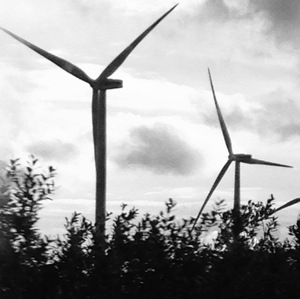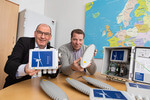News Release from windfair.net
Wind Industry Profile of
Study with explosive power – Where are the profitable locations to produce wind power really located?
Northern Germany just made top ranks mostly in statistics about high unemployment and poor education. In recent years, however, a major change took place in the field of energy production which slowly brought prosperity to the North: They discovered wind power – and impoverished communities suddenly earned good money, because of the wind which blows constantly and especially strong in the north. They were back on the map all over sudden.
And while Southern Germany mainly relied on nuclear power during the last years and has still remained skeptical about wind – there is that 10H-regulation in Bavaria e.g. – more and more turbines were diligently built in Northern Germany.
A new study could however turn the old, but well-known formulas of "strong wind in the north = high electricity production" and "weak wind in the south = low electricity production" upside down.
Swiss researcher Stefan Pfenninger from the ETH Zurich and Ian Staffell of the Imperial College London have developed new simulations of wind energy production in Europe and thereby revealed distortions in the data used to date. After country-specific corrections they have collected new data that challenge old models and results:
The amount of installed capacity says very little about how much electricity is actually fed into the national grid by a country’s wind fleet, because the wind just does not blow constantly and consistently. Therefore, simulations are created first to estimate how high the load could be at a given time.
Recently, researchers have started performing such simulations with the help of 'reanalysis' models: global meteorological models fed with measured data such as from weather stations and satellites, which process these measurements into a coherent world-wide simulation of atmospheric conditions.
However, in these weather models the real world is greatly simplified and does not include important aspects for wind energy such as the topology of the site in all its detail. Thus, these models provide a permanently distorted picture of reality, which can now be adapted to reality according to the new calculations.
The two researchers have therefore collected data of recorded electricity output from wind farms across Europe and used country-specific production data which was provided by the transmission network operators. This database was needed in order to derive correction factors for each European country. Then they simulated the wind power production in Europe over the period of twenty years by using their newly-developed Virtual Wind Farm Model (VWF).
They found out that previous studies overestimated the wind power production in Northwestern Europe by up to 50 percent and have, however, underestimated production in Southern Europe by 30 percent. They also recalculated the capacity factors for Europe: the current European average is 24.2 percent, compared with 32.4 percent in the UK and 19.5 percent in Germany. The European average only varies by a few percent from one year to the next. “This fluctuation is much less than the deviation observed in individual countries", Pfenninger told the press. “The bigger the wind fleet and the wider the geographical footprint, the smaller the fluctuations on the supply side”. It is therefore important that the national electricity grids become better interconnected in order to compensate for production losses in an area through an increased production in another country.

For the database to be continued and used, the two researchers have created an interactive web application – www.renewables.ninja – where the European data set is available for download. The platform has already users of 54 institutions from 22 countries, including the International Energy Agency.
- Author:
- Windfair Staff
- Keywords:
- study, wind energy production, location



























